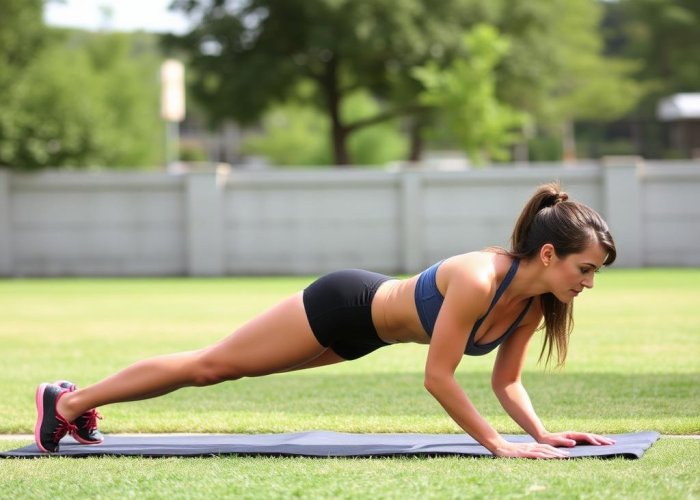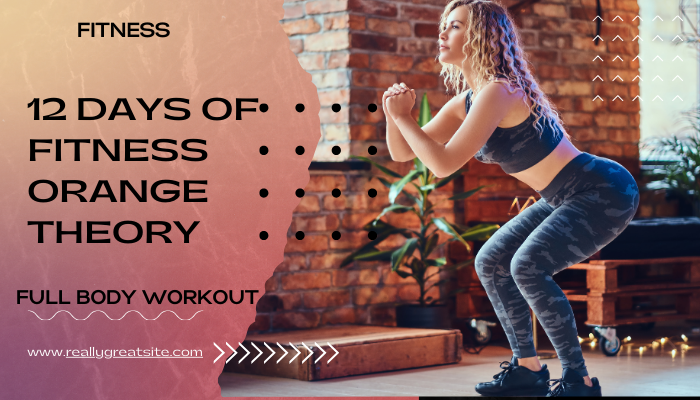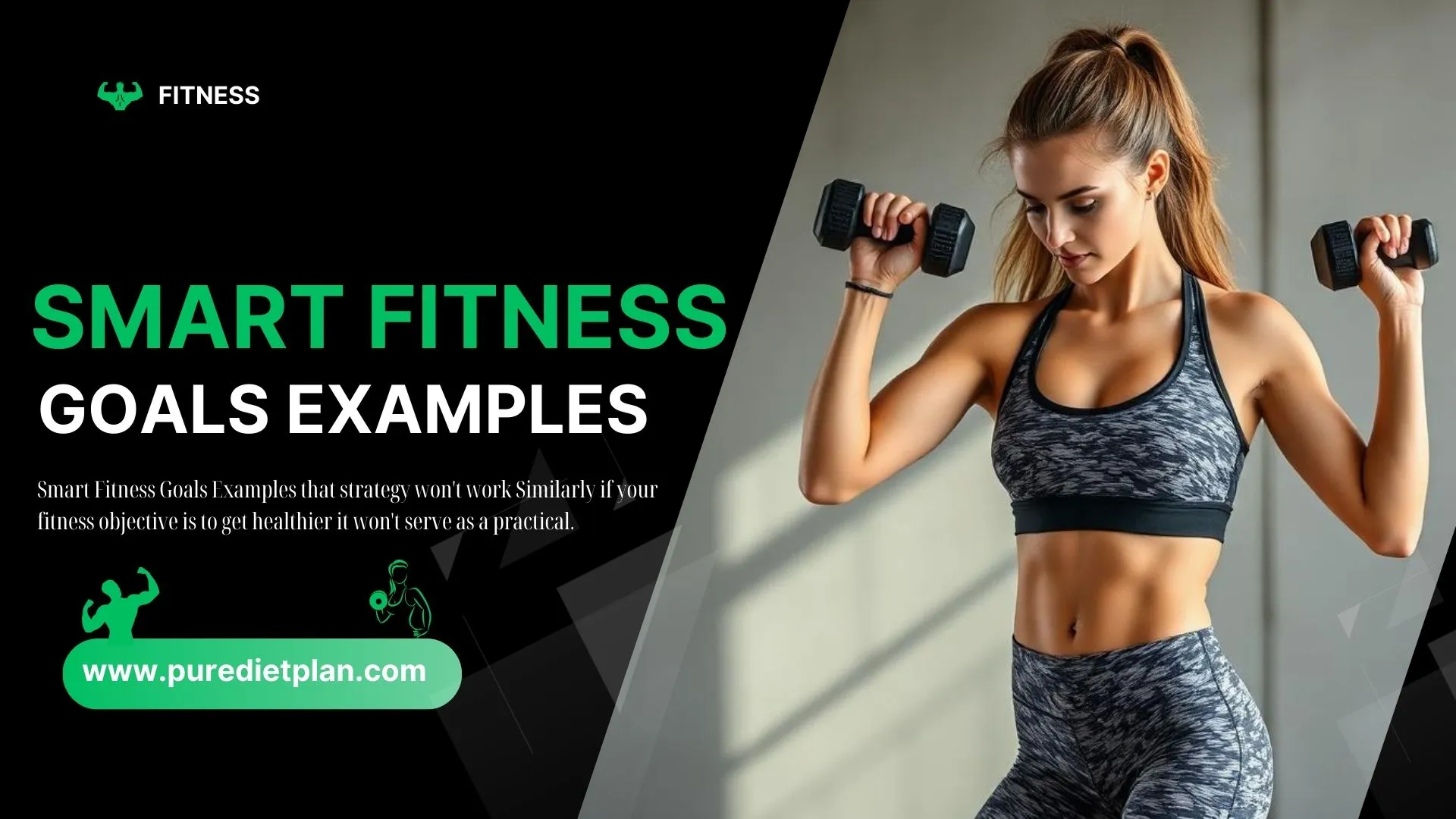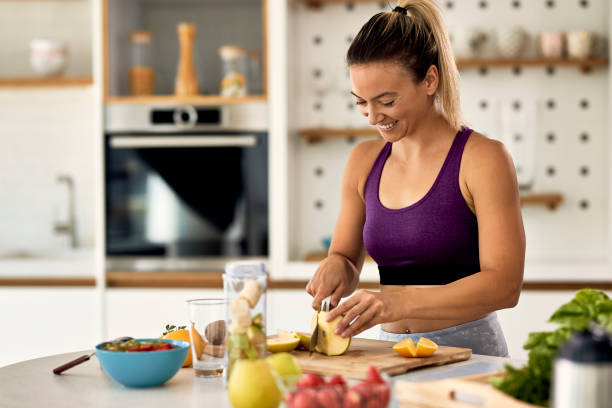Outdoor Workouts For Beginners

It might be time to switch your workouts outside when the weather starts to warm up. If you've never been outside for your exercises, especially if you're a fitness novice, you'll be pleasantly surprised at how outdoor activities may help break up the monotony of your cold-weather fitness plan. Outdoor Workouts Continue reading to learn about all the advantages and delights of basic outdoor exercise.
There are many advantages to spending time in nature, including a reduction in stress and anxiety, enhancement of gut health, and general improvement of mood and well-being. Outdoor Workouts for Beginners When you add these health benefits to the many other advantages of exercise, such as increased lifespan, enhanced mental clarity, and lowered risk of disease, you might never want to set foot in a gym again.
Continue reading if you're convinced of the advantages but aren't quite sure where to begin with your outdoor exercise regimen. Any fitness level may benefit from these easy-to-learn but enjoyable outdoor workouts that don't require any special equipment.
Step-by-Step: Outdoor Workouts for Newbies
Beginners 15-Minute Full-Body Outdoor Workouts?

You can perform this quick, full-body exercise practically anywhere, as it combines strength and aerobic conditioning without the need for any special equipment. These workouts can be done singly or in sequence. As usual, it's crucial to consult your doctor before beginning any fitness regimen.
While exercising, if you experience any intense pain or dizziness, stop and consult your physician or DO. If any of the exercises feel too challenging, you can reduce the repetitions (the number of times you execute each exercise) or make the following adjustments to make the workout easier.
Outdoor Workouts for Beginners: Finally, before you start, remember to nourish your body with healthy meals before and after your workout, as well as to stay hydrated, especially in the warmer months.
Read also: Mastering Foundational Exercise Form and Cues
Why get into a warm state?
Warming up helps your body get ready for exercise and reduces the risk of injury by increasing blood flow to your muscles. Warming up should take five to ten minutes.
Outdoor Workouts for Beginners This can involve exercises like yoga, walking lunges, standing windmills, and running or marching in place. Five quick sun salutations may be a wonderful way to start your warm-up.
They improve blood flow throughout your body, help you connect to your breath, and allow you to express appreciation for being outside and exercising your body in the great outdoors.
The Greatest Ab Exercises to Do Outside
Core training, which is sometimes disregarded because it's perceived as either difficult or tedious, provides the base for all movement, including everyday actions like walking, lifting, and sitting. Outdoor Workouts for Beginners You may feel more resilient in daily life.
Become less prone to injury and have better posture by devoting some time to strengthening your inner and outer core.
When the weather gets warm, it's time to get those summertime abs in by moving your workout outside. The advantages are enormous: The ultimate indicator of athletics and general health is a strong, defined midriff, which also boosts self-esteem.
Dead Bug

Dead bugs tone many abdominal muscles, which may be well-suited for a workout one might undertake while sprawled out in the lawn. This involves the inner core muscles that aren't as frequently used, such as the transverse abdominis and pelvic floor muscles.
These muscles are essential for preventing pain and injuries, as well as supporting spinal stability. A good workout to strengthen your back and core is the dead bug exercise. This exercise is performed on your back while lying down. There are several ways to adjust the difficulty level.
How to execute a dead bug:
- Begin by lying on your back with your legs extended overhead, knees bent 90 degrees, and shins parallel to the floor.
- Raise your arms to the heavens. Stretch your right leg forward until it is floating over the floor, keeping your lower back softly pushed into the earth. Simultaneously, raise your left arm straight back behind you until it hovers above the floor.
- Return to the middle and repeat the exercise with the other arm and leg.
Plank

The plank is a fantastic workout. It works the muscles in your arms, back, and legs in addition to the inner and outer core through isometric contraction, which is the contraction of muscles without movement. The plank takes about a minute and can be done anywhere, even during an outdoor workout.
The plank, also known as an abdominal bridge, front hold, or hover, is an isometric core strength exercise that has you holding a push-up-like position.
Methods for doing a plank:
- Lie on your back and lower yourself to the ground. Make sure your elbows are under your shoulders and your feet are together.
- Use your glutes to lift yourself onto your toes.
- Elevate your hips. Your body should be parallel to the floor. Make sure your tush is neither too high nor too low, since this may cause improper activation of the core and excessive tension on your lower back.
- As you maintain the pose, imagine that you are encircling your core with a corset made of your transverse abdominis, or inner core muscles. Consider maintaining a straight torso and deliberately pushing your elbows toward your toes.
Read also: 11 Best Workout Moves for Stronger Hips
Leg exercises outside without equipment?
Squats

The ultimate leg exercise that can be done anywhere is the squat. These are the easiest and most effective quadriceps and glute exercises. Strengthening the glutes is vital for many people who do not exercise frequently, since weakness in this area can result in lower back discomfort.
A squat is a strength training exercise where the practitioner stands up, lowers their hips, and then stands back up. When descending, the ankle joint dorsiflexes and the hip and knee joints flex; when standing, the ankle joint plantarflexes and the hip and knee joints extend.
How to execute a squat:
- When standing, spread your feet slightly wider than shoulder-width apart. Step with your feet pointed straight ahead or slightly outward.
- Squeeze your glutes and plant your heels firmly on the ground. Trace your knees over your feet to prevent them from moving too much.
- To help you sit back into your hips, clasp your hands and stretch forward while maintaining a tall chest and an active core.
- Lower yourself gradually while maintaining your weight in the middle of your foot and bending your knees as though you were sitting in a chair behind you.
Advances (Outdoor Workouts For Beginners)
To perform step-ups, locate a park seat or tree stump. Step-ups can help you increase the resistance in your gluteal and quadriceps exercises without using weights or dumbbells. Most exercises' ability to increase strength is enhanced by resistance.
How to do a step-up:
- Place your hands on your hips and face a low seat or tree stump.
- Take a step forward and plant your whole right foot on the step.
- To ensure you are standing on the step, push through your right heel and raise your left foot to meet your right.
- Drop your right foot, then your left, until both are on the ground. Slowly descend to the starting position.
- Use your left foot to lead in the same motion.
Quick, high-intensity cardio exercises outside

It is especially crucial to consult your physician prior to beginning an intense cardiovascular exercise program. High-intensity interval training (HIIT) is a fantastic method to improve your general and cardiovascular fitness.
Longer workouts are beneficial, but studies also indicate that shorter, highly intensive bursts can improve fitness and lower the risk of illness, including cardiovascular disease.
Runs (Outdoor Workouts For Beginners)

The best HIIT exercise is a sprint, which you can perform anywhere. Studies have demonstrated that sprinting can even improve fat metabolism the following day. You may feel silly sprinting in a public park, but no one will notice—and if they do, they'll be inspired to start an outdoor fitness routine.
How to run a sprint:
- As quickly as you can, run a straight line for 20 seconds, and then take a 20-second break.
- Complete three sprints as part of the beginner's outdoor workout.
Walks and hill runs
Climbing hills is one of the best exercises for building quadriceps and glutes. This difficult exercise is a fantastic method to increase the intensity of your training. Cardiovascular strength may be developed through intense exercise without requiring a lot of time or distance traveled.
Read also: 10 Functional Fitness Exercises to Keep You Injury-Free for Life
How to run up hills (Outdoor Workouts For Beginners)
Choose a steep hill, then spend 30 seconds walking or running on it. When performing this exercise, exercise caution and stop or slow down if you feel ill.
Arm Exercises Outside Without Equipment?
Push-Ups

Push-ups are an excellent, rapid workout that targets many major arm muscles. Push-ups build strength in the back, shoulders, and chest. Push-ups are a beneficial workout for beginners because there are many progressions available. Push-ups may be done in a variety of ways. First, from your knees, then from your toes, and lastly, on an incline or with three legs.
How to execute a push-up:
- Place your hands just outside of your shoulders and stretch your fingers apart as you begin to lie on your stomach.
- As you consider screwing your hands into the earth, set your shoulders.
- As you extend one leg at a time, contract your glutes.
- Engage your core to keep it tight.
- Draw a straight line connecting your upper back, glutes, and head.
- Slowly bring your body closer to the ground (inhale).
- Exhale as you push your body away from the ground.
Bicep and triceps push-ups
Although the standard push-up exercises primarily target the chest and back of the arms, you may modify them somewhat to engage additional muscular groups, such as the triceps and biceps.
How to do push-ups with your triceps
- Place your hands just outside of your shoulders and stretch your fingers apart as you begin to lie on your stomach.
- As you consider screwing your hands into the earth, set your shoulders.
- As you extend one leg at a time, contract your glutes.
- Engage your core to keep it tight.
- Lift yourself into a plank posture. Draw a straight line connecting your upper back, glutes, and head.
- Keep your elbows tight against your ribs as you gently lower your body toward the ground (inhale).
- To return to your beginning posture, push your body away from the ground (exhale).
conclusion on Outdoor Workouts For Beginners
Beginners may start their fitness adventure while taking in the beauty of nature with outdoor exercises. Yoga on the beach, a bodyweight circuit in your garden, or a brisk stroll in the park—exercising outside provides mental and physical renewal. The secret is to begin with easy exercises, maintain consistency, then slowly up the ante as your level of fitness increases. Take in the fresh air, become aware of your surroundings, and let the natural world motivate you to maintain an active and healthy lifestyle. Keep in mind that each step advances your fitness goals!
FAQs: Outdoor Workouts for Beginners
Where should a beginner start working out?
Cycling and swimming are examples of low-impact exercises. Make sure the exercises you pick each time you work out target various body areas. You might perform weight training the following day and walk or swim the day before. Try training with high-intensity intervals.
Which workout type is best for beginners?
- Strength Training: Strength training exercises help build muscle and bone mass.
- Cardio: Cardio exercises help improve cardiovascular health and burn calories.
- Stretching & Mobility: Stretching and mobility exercises help improve flexibility and range of motion.
Is it okay to work out in a park? (Outdoor Workouts For Beginners)
There are several benefits to exercising in a park as opposed to a gym. First of all, being in the open air and in a natural setting may improve your mood and general well-being. Parks provide greater room for mobility and a variety of landscapes, which may enhance and inspire your exercise routine.
Where should a beginner start working out?
Start with a cardio machine (such as the elliptical or treadmill) and try to maintain it for 20 to 25 minutes, or as long you think is safe. If you can tolerate more, start out gently and then slowly change the resistance, pace, or slope.
How can I get fit in 30 days?
Every other day, spend 20 to 30 minutes running or jogging. Other moderate-intensity exercises include swimming, cycling, and brisk walking. Perform three to four sets of bodyweight exercises, such as squats, pushups, lunges, burpees, or Russian twists, following your aerobic activity.




